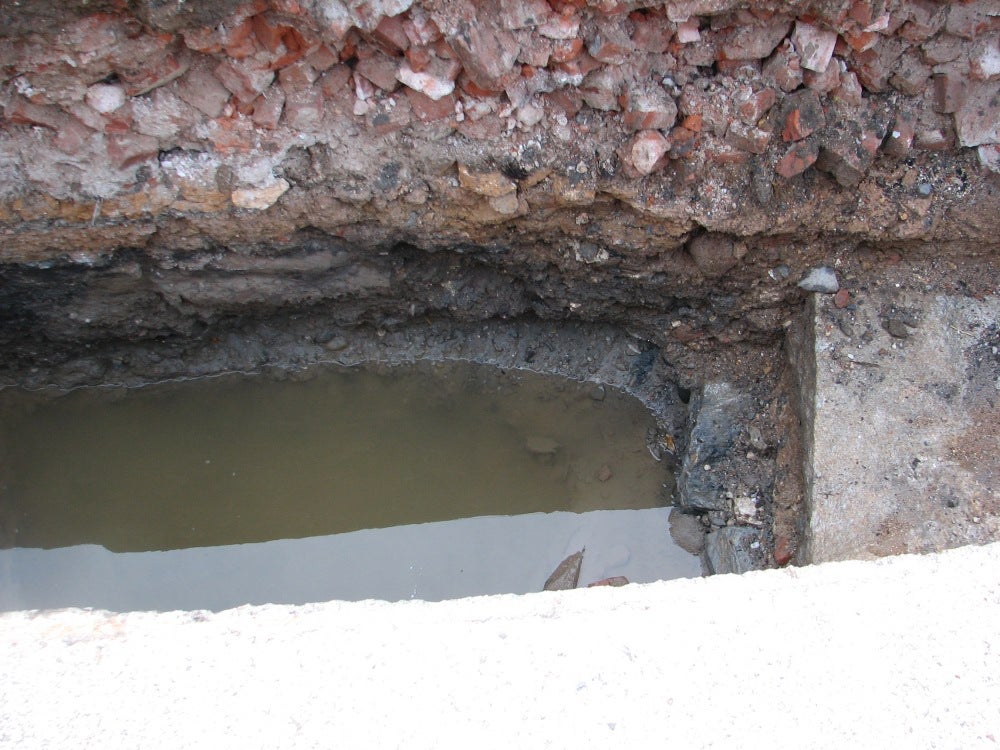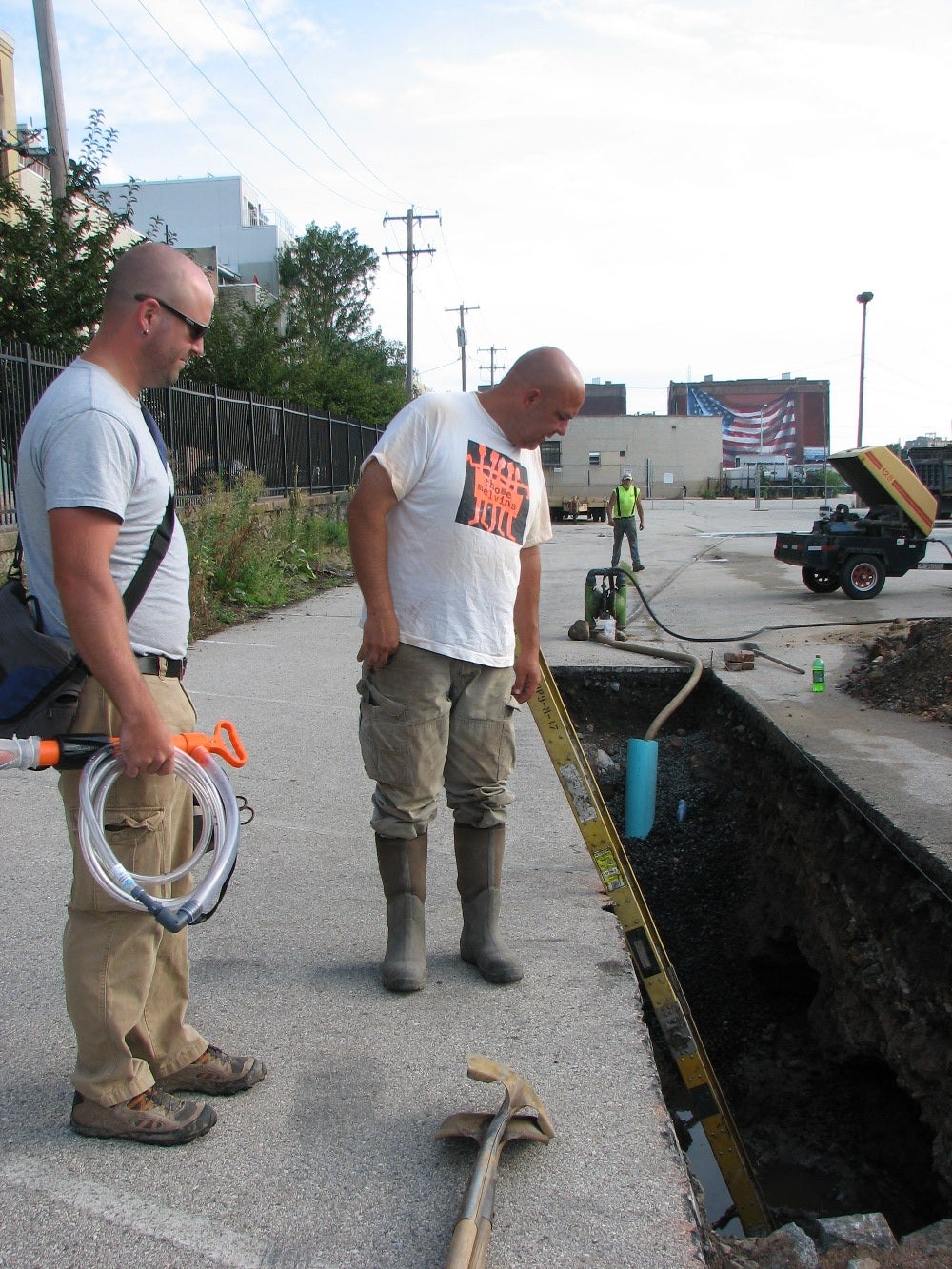Large wooden pegs found beneath waterfront parking lot may be construction materials from 17th Century shipyard
Archaeologists working on the site of a former Philadelphia shipyard that was in business before the arrival of William Penn have found large, wooden pegs that might have been intended to hold a ship together.
Pegs were used in construction before nails became the preferred method. The ones found at the West Shipyard site – now a parking lot on the west side of Columbus Boulevard near Vine Street – are about a foot long, said Project Archaeologist Tim Mancl. “These are not from a house,” he said.
So are they related to the West family’s shipbuilding enterprise? Potentially, Mancl said, but he can’t say for certain until the team does more research into 17th Century shipbuilding techniques and tools.
An overview of the findings.
Mancl works for John Milner Associates of West Chester, the firm hired by the Delaware River Waterfront Corporation to conduct a preliminary study of the ground beneath the parking lot to determine if more archaeology must be done at the site before it can be redeveloped as part of the city’s plan to revitalize the Central Delaware Waterfront.
In addition to the pegs, the team has found several rough-hewn logs running perpendicular to the original Delaware River shoreline. Mancl said they are either related to the West Shipyard or 17th Century Philadelphian’s efforts to extend the land further into the river. Either way, it’s a significant find.
“We’re excited about it,” he said.
More from Mancl on the pegs and rough-hewn timbers
Two weeks of digging wraps up today, but analyzing what was found will take some time. A report to the DRWC should be finished in September.
Based on what was found, Mancl said he believes there is more to discover.
In the largest trench dug, in the southwest corner of the parking lot, some of the 17th Century soils are marine, meaning they were in the river, Mancl said. But others in the same trench were upland soils. This means a portion of the shoreline was found. Mancl said he would like to see future efforts focus on the relatively small upland area that was discovered. But since a shipyard was on the site, there could have been uses between the upland area and the water area, and more digging could reveal “evidence of modification to the land,” such as the rough-hewn logs.
At the DRWC board meeting later in the morning, Planning Manager Sarah Thorp reported some of the findings to the board.
Thorp spoke of the pegs, which she said are “very indicative of shipbuilding.” She also said pottery and glass shards and smoking pipe stems dating to the 17th Century were found in the same layer of earth.
Thorp said she anticipates the report will recommend expanding the trench where the logs and pegs were found.
The DRWC is required to fully study the site before it can be developed, because it is on the National Register of Historic Places. In the 1980s, a dig sponsored by the Philadelphia Historical Commission took place on the northern section of the property. It yielded a very well preserved wooden ship-way – basically, a ramp on which boats that have just been built or have been repaired were eased down into the water.
It is the only early 19th Century shipway known to exist. This dig looked for a mid- 18th Century bulkhead that was also unearthed during that dig in the 1980s, and found no evidence of it. Another archaeologist on the team who was interviewed last week said he believes the shipway still exists, but the previously unearthed bulkhead deteriorated either from being exposed to air or from work done on the parking lot since.
Friday, Doug Mooney, president of the Philadelphia Archaeological Forum, which advised DRWC as it decided how to proceed with the property, said the slipway “is almost certainly still well-preserved beneath the parking lot.”
Reach the reporter at kgates@planphilly.com
WHYY is your source for fact-based, in-depth journalism and information. As a nonprofit organization, we rely on financial support from readers like you. Please give today.





